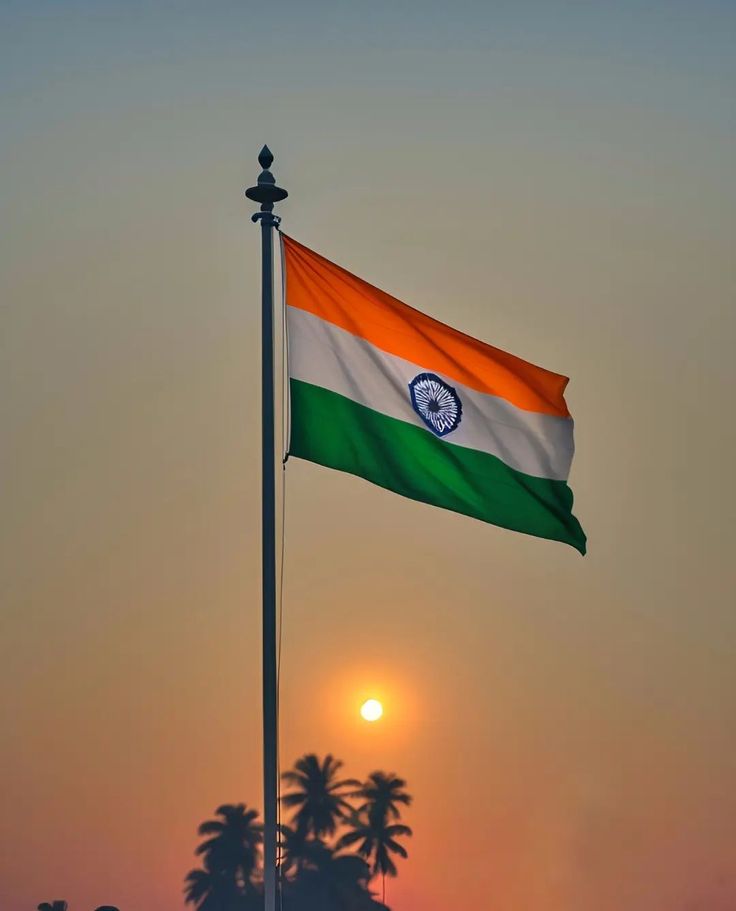7 Powerful Facts About the National Flag of India That Will Inspire You
Introduction
The National Flag of India, also known as the “Tiranga,” is more than just a piece of fabric—it is a symbol of India’s sovereignty, unity, and pride. It represents the sacrifices made for independence and continues to inspire millions. Whether it’s hoisted on Republic Day, Independence Day, or other national occasions, the Tricolor evokes a sense of patriotism in every Indian.
In this article, we will explore the biography of the Indian flag, its history, significance, daily life impact, and interesting facts that make it special.
Biography of the National Flag of India
- Name: Tiranga (Tricolor)
- Designed By: Pingali Venkayya
- Adopted On: July 22, 1947
- Colors and Meaning:
- Saffron: Represents courage and sacrifice
- White: Symbolizes peace and truth
- Green: Represents growth and fertility
- Ashoka Chakra: Depicts righteousness, justice, and dharma
History of the National Flag of India
The journey of the Indian flag has been remarkable, evolving over decades before reaching its current form:
- First Indian Flag (1906): Unofficially hoisted at Parsee Bagan Square in Kolkata, featuring three horizontal stripes of green, yellow, and red.
- Berlin Committee Flag (1907): Designed by Bhikaji Cama, it was hoisted in Germany and included the slogan “Vande Mataram.”
- Home Rule Movement Flag (1917): Adopted by Bal Gangadhar Tilak and Annie Besant, featuring five red and four green stripes.
- Swaraj Flag (1921): Designed by Pingali Venkayya, consisting of saffron and green with a spinning wheel at the center.
- Final Design (1947): The present Tricolor was adopted on July 22, 1947, replacing the spinning wheel with the Ashoka Chakra.
Significance of the National Flag of India
The Tiranga is more than just a national emblem; it embodies the essence of India:
✅ Patriotism: A reminder of the sacrifices made by freedom fighters.
✅ National Unity: Represents the cultural and religious diversity of India.
✅ Global Identity: Showcases India’s sovereignty on the world stage.
Daily Life Impacts of the National Flag of India
The Indian flag influences daily life in many ways:
🎖 In Schools & Institutions: Students pledge allegiance to the flag, instilling patriotism.
🏆 Sports & International Events: The flag represents India in global competitions like the Olympics.
🏢 Government & Public Offices: It is hoisted in official buildings, signifying authority.
🏡 In Homes: People display it during national holidays, symbolizing pride.
Interesting Facts About the National Flag of India
1️⃣ The flag can only be made of Khadi, as per law.
2️⃣ The Ashoka Chakra has 24 spokes, symbolizing 24 virtues of life.
3️⃣ Hoisting the flag upside down is considered an offense.
4️⃣ Mahatma Gandhi suggested the original design with a spinning wheel.
5️⃣ The highest flagpole in India (360 feet) is in Attari, Punjab.
6️⃣ India’s flag was first carried to space in 1984 by astronaut Rakesh Sharma.
7️⃣ The largest Indian flag (108 x 72 feet) was hoisted in Ladakh in 2021.
Observance & Rules for the National Flag of India
The flag is honored through various rules under the Flag Code of India (2002):
✔ Can be hoisted daily, not just on national holidays.
✔ Should never touch the ground or be used as clothing.
✔ Must be illuminated at night if displayed after sunset.
Wishing & Messages for National Flag of India
💬 “Let’s honor our Tiranga and remember the sacrifices behind our freedom. 🇮🇳”
💬 “May our flag always fly high, symbolizing India’s strength and unity! 🚩”
💬 “Proud to be an Indian, proud to hold the Tiranga in my heart! ❤️🇮🇳”
Final Thoughts: Why the National Flag of India Matters to Society
The Indian flag is more than a national symbol—it is the heartbeat of the nation. It represents the struggles of the past, the achievements of the present, and the aspirations of the future. Every time we salute the Tiranga, we pledge to uphold the values it stands for: unity, integrity, and progress.
🇮🇳 Jai Hind! 🇮🇳










